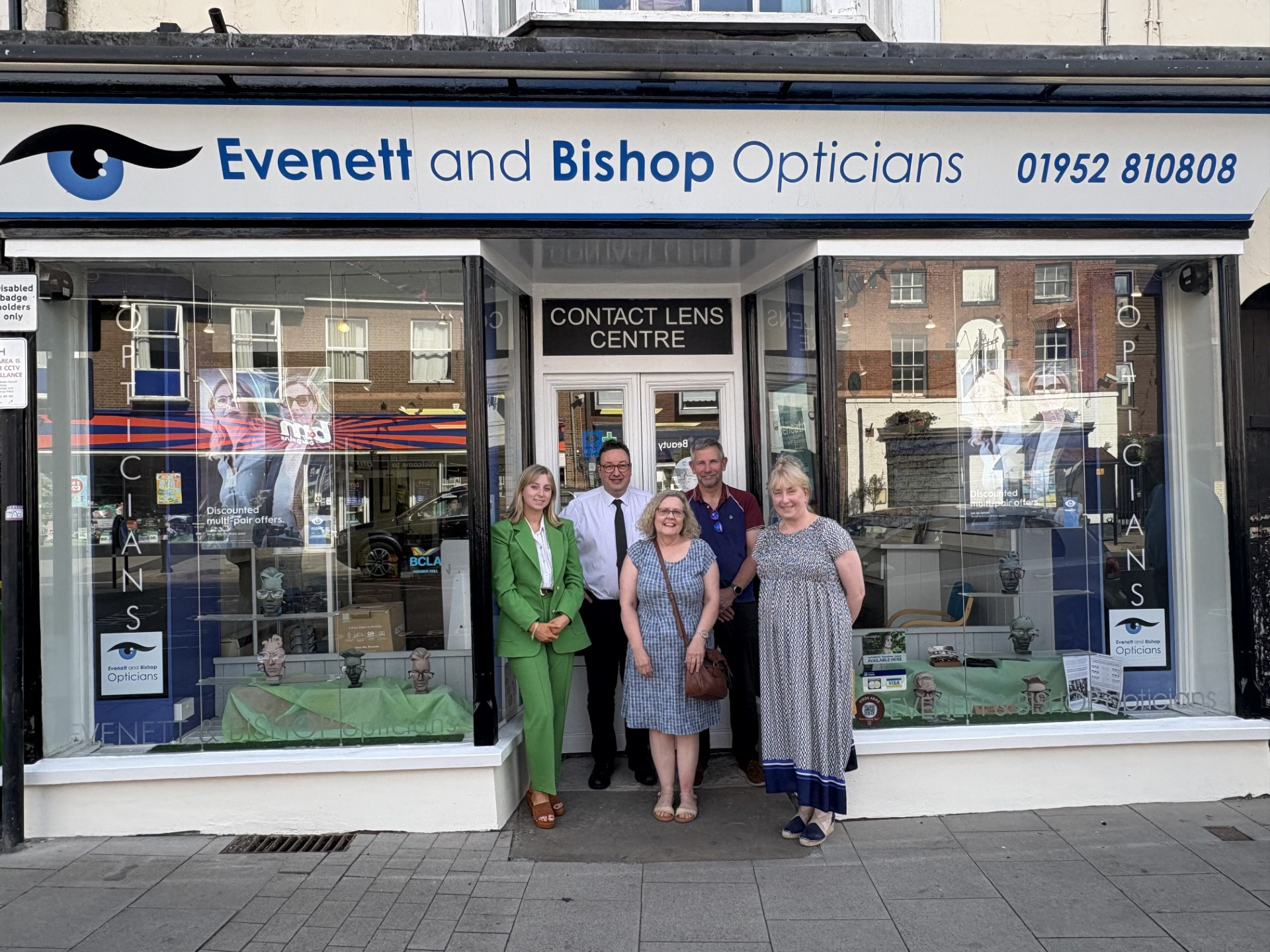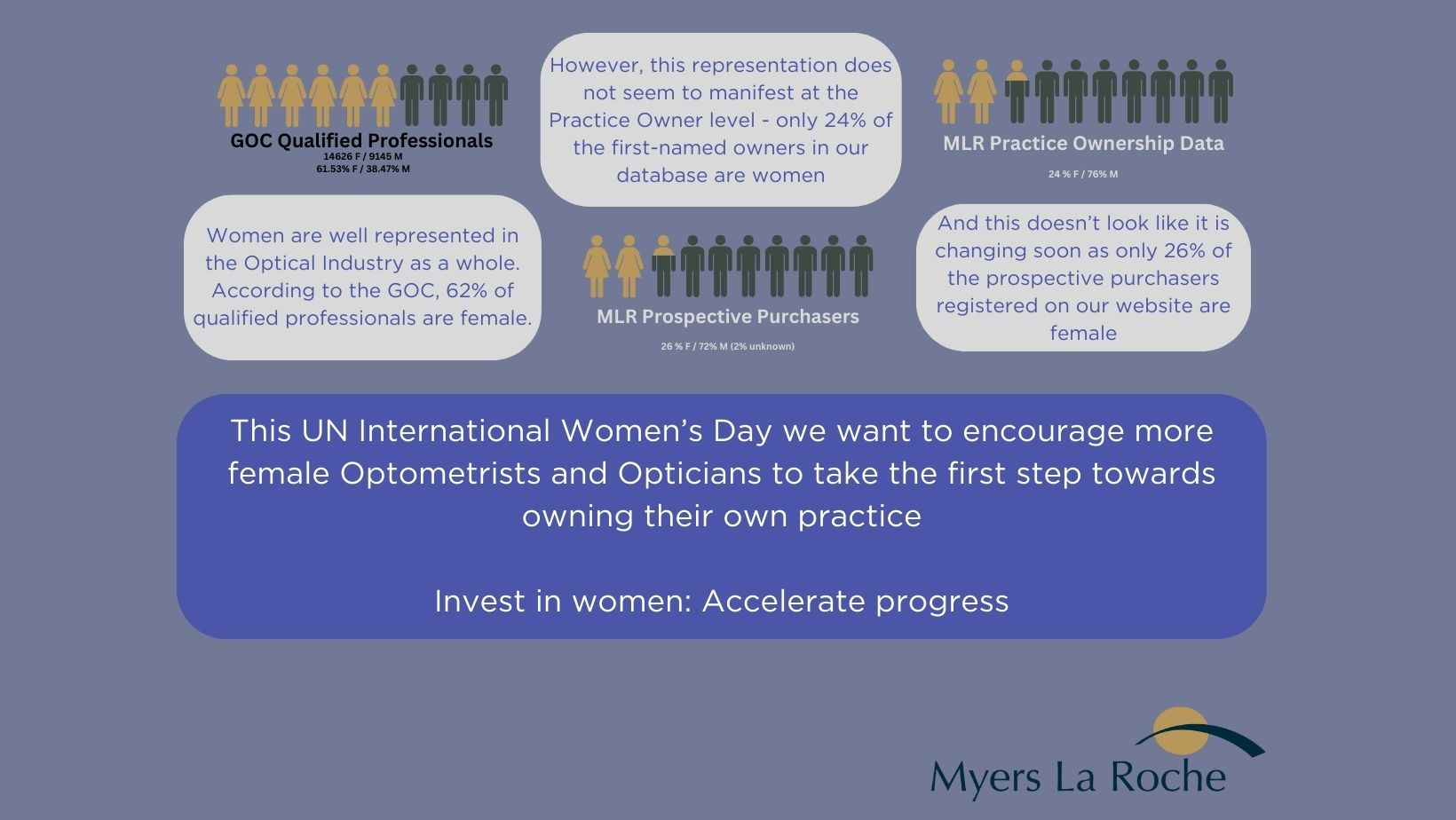VALUING AN OPTICAL BUSINESS.
CONTEXT AND LIMITATIONS OF THIS RESOURCE:
This information is provided to assist practice owners and their advisors to better understand optical business valuations. However, a little information can be a dangerous thing and we would strongly caution against you or your accountant attempting a ‘DIY’ valuation without the appropriate level of expertise and experience in the sector – or without reference to an adequate level of current “comparative data” (I.e., real price data from completed practice sales.) The optical practice sales market is dynamic – and current market values are markedly different from sales from even 12 months ago – therefore the importance of access to recent and real-time sale price valuation data cannot be overstated.
Furthermore, an increasing trend in the adoption of hearing services within optometry practices now adds an extra level of complexity in many businesses that requires careful handling when it comes to business valuations.
Understanding the value of your practice is the foundation for numerous critical business decisions and it is essential to ensure you are working with an accurate valuation figure from a credible, fully independent source. Beware of free online “instant valuation” services. Nobody can accurately value a business in minutes on minimal financial information. In our experience these tools tend to be “click bait” that do not provide meaningful data and are designed to capture your contact details to allow their creators to engage with you in a sale process.
Failure to obtain an accurate, credible practice valuation (and a market narrative and context to back it up and add meaning) is likely to lead to a situation of information asymmetry for the owner or other vested interest – which in turn may lead to sub-optimal outcomes in relation a transfer of equity, execution of a successful exit or retirement strategy, or potentially a very difficult conversation or a nasty bill from the inland revenue.
WHY VALUE YOUR OPTICAL PRACTICE?
Whilst the majority of valuations are commissioned in preparation for a sale (and we will cover the optimal timing for this later in this guide) there are a number of other reasons optical practice valuations may be required. These include a number of positive, proactive initiatives such as:
- Tax planning and company formation or restructuring to ensure that owner’s ongoing annual drawings and any future sale proceeds are enjoyed as tax efficiently as possible.
- Financial planning and assessment of personal net worth conducted as part of early stage exit planning
- Employee incentivisation - with an acute shortage of clinical professionals in many areas of the UK and Ireland, schemes such as Enterprise Management Incentives (EMI) offer a way for employers to bring employees into part ownership of the business and to lock them into the business for the long-term.
- Exploration of succession / staged succession planning within families or internally to one or more existing members of staff (This type of valuation may need to factor in a minority shareholding discount and further advice around implementation of a shareholder's agreement)
- A prospective purchaser commissioning an independent valuation in order to raise finance and/or to obtain a second opinion on the value of an optical business to ensure they are paying a fair price.
Sadly, there are also a number of negative catalysts that require an accurate, formal practice valuation. These include:
- The breakdown of stakeholder relationships / disputes between partners that have made a working relationship untenable and require a partnership dissolution via some form of financial resolution, combined with ideally mediation (but in the worst-case scenario litigation) to unlock the impasse.
- Valuation for divorce purposes to help facilitate a meaningful financial settlement
- Probate and settlement of wills and estates
WHAT FACTORS AFFECT AN OPTICIAN PRACTICE’S VALUE?
There are a huge number of variables that are assessed when determining the value of an optical practice. These include the level of competition, the enterprise scale, the trend in trading (normally reviewed over the latest 3 financial years), location and catchment population size and demographic, reputation, anticipated repeatability of future profits, specialisms, security of tenure, quality of fixtures and fittings, perceived reliance/personal goodwill of the owner, or other key staff. On occasion, a level of potential may be factored in – but only when sufficient empirical KPI data can genuinely support this.
However, within the optical sector, the primary driver of value is a business's true underlying profitability. *It is essential to note that the ‘true’ profitability may differ from the stated ‘paper’ profit on the formal company accounts. We will deal with this later in this resource when we cover how optical practices are valued.
WHAT IS THE BEST METHOD FOR CALCULATING THE VALUE OF AN OPTICAL PRACTICE IN THE UK?
Over the years we have come across people attempting to value optical businesses in many ways:
Some methodologies are crude and overly simplistic. For example, applying a value based on a ratio of annual turnover, an incredibly crude approach that inevitably leads to wildly inaccurate valuation figures in most instances.
Others utilize more complex, abstract approaches such as the discounted cashflow methodology, which is harder to understand and open to interpretation.
In practice, there are 2 credible ways to value an optical practice:
- The first is a yield-based business valuation – this is appropriate for profitable practices and is the most frequently used approach.
- The second is an asset-based business valuation – this is utilised for very small ‘lifestyle’ practices, or larger loss-making or marginally profitable optical businesses
We will deal with each in turn.
VALUING AN OPTICAL PRACTICE VIA A YIELD-BASED APPROACH
The primary method of accurately assessing the value of an optical practice in the UK involves a 2-phase process:
STEP 1 - Accounts Normalisation / Calculation of the True Profit / EBITDA
To effectively explain what the process of normalisation is and why it is needed, it will help to provide some context.
It is often said (perhaps only half in jest) that a business should produce 3 different set of annual accounts:
- One set prepared for the taxman that minimizes the stated profit - in order to reduce the owner’s tax bill.
- A second set prepared for potential buyers that maximizes the businesses stated net profit - to boost the perception of the businesses value
- A final set that actually shows what is really going on!
As they say, many a true word is said in jest – and the key takeaway here is that accounts can be formulated to present a business in a particular light to suit a specific agenda. This means that comparing 2 businesses side by side and establishing their relative values using their stated net profits does not compare them on a ‘like for like’ basis and therefore produces poor outcomes and a lack of clarity.
A greatly simplified example should help demonstrate this.
PRACTICE A
Annual Sales £550,000
STATED Net Profit £50,000
PRACTICE B
Annual Sales £550,000
STATED Net Profit £100,000
On face value, PRACTICE B looks to be the more profitable, higher value practice due to its superior stated net profit. However, on review of the profit and loss accounts a very different picture emerges.
The 2 directors of PRACTICE A both draw a maximum annual pension allowance of £60,000 (so a total of £120,000) which is drawn from the business before the net profit is calculated. In a sale scenario, this means that a buyer would benefit from this too (they could either choose to use the business to max out their pension – or let this money flow down to the profits.) In contrast, the owners of PRACTICE B Opticians do not draw any pensions.
To reflect the reality of the situation - and to allow a fair side by side comparison of the true yield from the business - we therefore need to add the pension drawings back into the profit figure for Practice A, to produce the fairer, more reflective accounts below:
PRACTICE A
Annual Sales £550,000
Pension add back +£120,000
ADJUSTED Net Profit £170,000
PRACTICE B
Annual Sales £550,000
Pension add back +£0
ADJUSTED Net Profit £100,000
This process of adjusting a business’s accounts to make them representative of the true underlying profit is called normalisation. In practice this process is far more complex than the example provided above, with typically anywhere between 5 and 10 adjustments needed to the accounts to make them reflective of the real underlying profit level. Some adjustments – such as amendments to reflect representative open market salaries of owner operators (allocated between their clinical/client facing time and management duties) require extremely careful handling to calculate accurately.
The adjusted net profit returned by the normalisation process is commonly known as a business's EBITDA, which stands for Earnings Before Interest, Taxes, Depreciation, and Amortisation.
Calculation of the genuine EBITDA within an optical practice needs to be done carefully - because any inaccuracies will be amplified in stage 2 of a yield-based valuation. As per the cautionary note in the preamble – we would strongly advise you not to do this yourself. This approach may save you modest expenditure in the short term, but without the insight and experience of a genuinely experienced specialist optical valuer has a very high chance of being to a significantly false economy – especially when coupled with a DIY attempt at step 2.
STEP 2 - applying a multiplier to the EBITDA to calculate the practice value
Once an optical business’s EBITDA has been accurately determined, the final stage of the process is to apply a multiple to it to determine the value.
We will use the examples of practice’s A and B from earlier to illustrate this more clearly.
PRACTICE A
EBITDA/Adjusted net profit: £100,000 x multiple = practice value
PRACTICE B
EBITDA/Adjusted net profit £170,000 x multiple = practice value
This multiple of profits reflects the amount a purchaser is willing to pay for each pound of annual pre-tax earnings generated by the company. This approach is utilised across a wide range of healthcare sectors as well as a variety of other industries, with the main variance being the multiple applied.
This brings us nicely to the million-dollar question:
“WHAT MULTIPLE OF PROFIT SHOULD YOU APPLY TO AN OPTICAL PRACTICE?”
– and the answer, as you might have guessed, is not a simple one, it lies within the range of anywhere between 2 at the very low end and 8 at the extreme high end.
Let’s apply this to the previous examples to bring it to life a bit more. For the purposes of this illustration, we have removed some of the higher multiples that are only likely to apply to a very small number of outlier practices possessing special strategic values.
Practice A
EBITDA £100,000
Multiple - Implied Core Value*
x2 - £200,000
x3 - £300,000
x4 - £400,000
x5 - £500,000
*Valuation price excludes balance sheet items.
As the example above illustrates, the multiple makes a huge difference to the value!
Why is the range of multiple to earning so great within the optical sector when valuing a practice?
The unusually broad range of EBITDA multiples used to determine practice values is a direct reflection of the incredibly diverse range of business enterprise scales operating and models employed within the UK (and Irish) optical sectors.
In the UK, the English, Scottish and Welsh primary optical care service provision and remuneration have incredibly different service provision mandates – and at a regional, ICS level in England there is a postcode lottery for what services practices can offer, with huge variance in the remuneration for delivery of the same service in different locations.
Frustrations with NHS/GOS bureaucracy and low remuneration for the core NHS eye examination boiled over during the pandemic, leading to an unprecedented number of independent practices either ripping up their GOS contact and going fully private – or moving to some form of hybrid operation. You can learn more about this in our recently published book “Roadmap to Private practice.”
We have now reached a juncture in the sector with such a huge level of variance - in the optical that there is a strong argument to say that when it comes to business values it is no longer a single market at all, but rather a market of markets, each which need to be treated quite differently when it comes to the appropriate multiple to apply to determine credible valuations.
Ultimately, the multiple of profits reflects the value that investors are willing to pay for the business's earnings. A higher multiple of profits suggests that investors believe the business has strong growth potential and generates reliable earnings.
The full range of factors that influence the multiple applicable in a practice valuation were covered in the earlier section: What factors affect the value of an optical business?
Valuing an optician's business via an asset-based valuation
Where possible, an optical business should always be valued via the yield-based method outlined in detail above. However, in certain circumstances, applying the normalization process to a practice's accounts will return only a very marginal profit level - or even a trading loss.
If we then go onto apply a multiplier to a business with finances of this nature, it will return either: -
An amplified negative number - implying the nonsensical situation that an owner will have to pay a “buyer” to take their business off their hands!
Or;
A positive value, but one that is derisory
In these circumstances normal practice is to revert to an asset-based valuation. An example should help bring the logic of this to life:
EXAMPLE:
A fledgling practice that has been trading for 18 months has a negative true underlying profit (EBITDA) of –£20,000.
Applying any multiple to this returns a negative value.
So, for example if we apply a low multiple of 2 x EBITDA, this returns a value of 2 x -£20,000 = -£40,000.
Yet the reality is that if the company were liquidated, the value of the equipment, fixtures, fittings and stock is likely to be well over £50k.
Practice profiles that are likely to require an asset, rather than yield based valuation include:
Established very small, loss making or marginally profitable ‘lifestyle’ practices
Immature, unproven practices yet to demonstrate a profit
Large established practices returning losses or very marginal profit levels, despite impressive revenues
WHAT IS THE PROCESS FOR VALUING AN OPTICAL BUSINESS
When possible, we will attend (out of hours to maintain confidentiality),but as we cover the whole of the UK and Ireland, to keep the cost down for our clients we have developed a tried and tested highly accurate valuation process that means it is NOT necessary for your Myers La Roche valuer to physically visit the practice being assessed. To allow us to do this, you will be asked to provide photographs and a walk-through video to allow us to review the layout and quality of the shop fit of your practice, which can be emailed/file transferred or sent to us via WhatsApp.
Whilst the physical premises underpin trading, for most optical practices, the primary value lies in the goodwill and financial performance (and anticipated future performance) of the practice. To allow us to assess this we will need:
- Copies of the latest 3 years available full published accounts (including both profit and loss and balance sheets)
- Accounts are historic/lag indictors, so any more up to date management accounts to provide a snapshot of current trading performance
- Completed copy of our practice assessment questionnaires which cover:
- Schedule of fixtures fittings and equipment
- Analysis of chair time utilization per service delivered
- Analysis of revenue from clinical and dispensing cost centeres
- Trends in clinical procedures
- Staffing costs and review of owner's time input
- Property costs, security of tenure and lease arrangements
- Review of other readily available KPI and metrics
- Assessment of other key commercial considerations and contracts
When possible/necessary/appropriate we will work with our client’s practice management supplier to assist in extracting the necessary data to facilitate a valuation.
What else is included in the valuation of an independent optical business valuation by Myers La Roche?
The core costs of a Myers La Roche valuation are inclusive of a 30-minute follow-up consultation.
Because Myers La Roche are full-service providers, we can offer a unique insight into an optical business and how it compares with other practices in the sector.
Via our proprietary in-house dataset, we are not only able to value, but also to evaluate the performance of the different key performance indicators and financial metrics of an optical practice. This means that we are able to flag up the crucial areas to focus on for improvement - and when a valuation proves lower than expected for the owner, we are usually able to quickly hone in on and diagnose the issues that need to be tackled.
What is NOT covered in or by our standard valuation of an optical business?
Whilst our valuation process and modelling tools do include a certain number of checks and balances in terms of benchmarking against a range of expected financial and KPI ratios which may potentially flag up anomalies or discrepancies - it is important to note that as valuers we are not being paid to check or audit the validity of the accounts of the practice being assessed and therefore have to take the financial records at face value as presented as is standard practice. We would therefore recommend that parties seeking to purchase some or all of the equity within an optical business commission a suitably qualified accountant to assist them with a due diligence process to verify the validity of the practice's finances.
Whilst we do offer a wide range of practice growth, exit planning and business leadership/mentoring services – these are NOT included in the core price of a practice valuation.
HOW TO VALUE A FRANCHISED OR JOINT VENTURE (JV) OPTICAL PRACTICE?
Whilst the major national chains of Specsavers, Boots Opticians and Vision Express each have some specific nuances in their models and accounting policies that need to be understood to provide accurate, meaningful valuations – the approach to the process and the methodology is broadly the same as the yield-based valuation already outlined earlier in this resource used for assessment of independent practices. However, it should be noted that a narrower range of multiples is typically applied – due to the restrictions/more prescriptive terms within their franchise / JV agreements which remove most scenarios where a potentially higher strategic value might be applicable to an independent.
Some of the optical franchises and joint venture businesses have more than one version of the franchise or JV agreement – some of which make the business more commercially attractive than others - therefore in addition to the standard financial data and questionnaires we may also require a copy of your franchise agreement as part of our assessment.
CHALLENGES IN VALUING AN OPTICAL FRANCHISE
Whilst optical franchises and joint venture businesses are valued using broadly the same methodology and framework, there are small, but significant differences between the business models of Vision Express, Boots, Hakim Group and Specsavers franchise (and joint venture) offerings that need to be understood and reflected to determine an accurate valuation figure.
Other challenges and considerations that impact on the value of all the major optical franchises include:
- Access to comparative data at a sufficiently local level to support business values
- An understanding of regional variations in clinical human resources supply that impact both independent and franchised optical business values.
- Occasional lack of true transparency and accurate apportionment of costs and profit centres in multi-branch optical franchises.
- Handling of minority shareholding and ascertaining when a minority shareholding discount should be applied.
HOW TO VALUE A SPESCAVERS FRANCHISE PRACTICE
Specsavers optical franchises are valued via a yield-based valuation methodology. Visit our dedicated Specsavers Valuation Guide to learn more
HOW TO VALUE A BOOTS FRANCHISE PRACTICE
Boots Opticians franchises are primarily valued via a yield-based valuation methodology. Visit our dedicated Boots Opticians Valuation Guide to learn more
HOW TO VALUE A VISION EXPRESS FRANCHISE PRACTICE
Vision Express franchises are primarily valued via a yield-based/EBITDA valuation methodology. Visit our dedicate Vision Express Valuation page to learn more
Required information
To carry out a valuation of a Vision Express optical franchise the following information will normally be required:
- The latest available 3 years full published accounts
- Any additional up to date management figures that are available for more recent trading months
- A completed copy of our Vision Express Joint Venture valuation questionnaire (which captures details of staffing, security of tenure, equipment schedules etc.)
- Digital photographs/and or a walk-through video of the practice to allow an assessment of the quality/wear and tear of the current shop fit.
- Details of the status of any sinking fund to allow us to factor in the implied assets/liabilities of the franchise in relation to mandatory future shop fit requirements from the franchisor.
- A copy of the joint venture partner's current Vision Express franchise/JV agreement
Timescales and Process
Myers La Roche’s valuation report will be delivered within 20 working days of receipt of the requested information.
HOW TO VALUE A HAKIM GROUP OPTICAL FRANCHISE /HAKIM GROUP JOINT VENTURE PRACTICE
With headquarters in Darwin Lancashire, the Hakim Group is the newest and fastest growing of the UK and Ireland’s large national optical chains. Its rapid growth has been achieved via a proactive strategy of mergers and acquisition of independent practices, fueled by venture capital funding. As a result, the Hakim Group joint venture resale market is immature which means that real life, comparative data is harder to come by. However, this situation does not preclude us from providing meaningful independent valuation of Hakim Group businesses, for purposes such as dispute resolution, probate, divorce or sale of all or part-equity.
Hakim Group Joint ventures are normally valued via a yield-based/EBITDA valuation methodology.
Required information
To carry out a valuation the following information will normally be required:
- The latest available 3 years full published accounts
- Any additional up to date management figures that are available for more recent trading months
- A completed copy of our valuation questionnaire (which captures details of staffing, security of tenure, equipment schedules etc.)
- Digital photos and/or a practice walk through video
- A copy of the Hakim Group Joint Venture agreement associated with the business
- Details of any embedded Amplify (or other audiology) provider in terms of revenue to the Hakim Group Optical Joint Venture business being valued and the associated commercial terms (where not included in the core JV agreement.)
Timescales and Process
Myers La Roche’s valuation report will be delivered within 20 working days of receipt of the requested information.
FIND OUT WHAT YOUR PRACTICE IS WORTH – Call or email to discuss your NEXT STEPS
More insights for you
Take a read below for further industry insights written by our Myers La Roche team:
Get in Touch
If you are interested in our services, then please call us on the number below:















